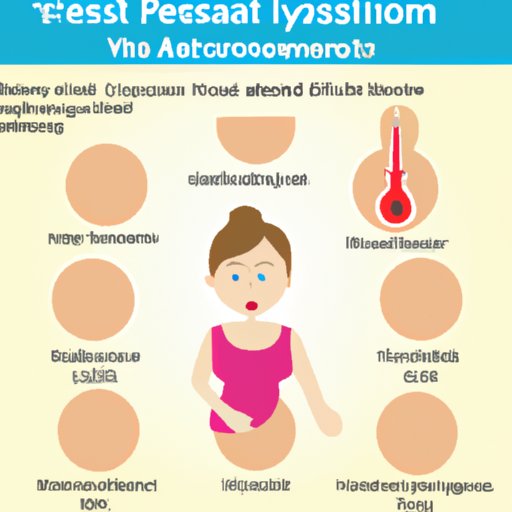Introduction
Yeast infections are a very common infection that affect many women. A yeast infection, sometimes called vulvovaginal candidiasis, is caused by an overgrowth of Candida albicans, which is a type of fungus. It’s important to understand the symptoms and causes of a yeast infection, as well as the available treatments and methods of prevention.
What Causes a Yeast Infection in Women?
There are a few different factors that can cause a yeast infection in women. These include hormonal changes, antibiotic use, diabetes, poor hygiene, douching, and stress.
Hormonal Changes
Hormonal changes can lead to an overgrowth of yeast. This is especially true during pregnancy, when hormone levels are higher than usual. This imbalance can cause an overgrowth of Candida albicans, resulting in a yeast infection.
Antibiotics
The use of antibiotics can also lead to a yeast infection. Antibiotics kill both good and bad bacteria, including the beneficial bacteria that help keep the yeast in check. Without this beneficial bacteria, the yeast can grow unchecked and cause an infection.
Diabetes
Women with diabetes are more prone to getting yeast infections. This is because high blood sugar levels can feed the growth of yeast. High glucose levels can also create an environment where yeast can thrive.
Poor Hygiene
Poor hygiene can also contribute to yeast infections. Not changing out of wet clothes quickly enough or wearing tight clothing can increase the risk of developing an infection. Furthermore, not cleaning the genital area properly can also lead to an overgrowth of yeast.
Douching
Douching can also increase the risk of getting a yeast infection. Douching can disrupt the normal balance of bacteria in the vagina, leading to an overgrowth of yeast.
Stress
Stress can also be a contributing factor to yeast infections. Stress can weaken the immune system, making it harder for the body to fight off infection. This can lead to an overgrowth of Candida albicans and a yeast infection.

Symptoms of a Yeast Infection in Women
The most common symptom of a yeast infection in women is itching. The itching is usually accompanied by a burning sensation and redness. Some women may also experience swelling and a thick white discharge.
Diagnosing a Yeast Infection
If you suspect you have a yeast infection, it’s important to see your doctor for a proper diagnosis. Your doctor will do a physical exam and possibly take some lab tests to confirm the diagnosis. It’s important to get a proper diagnosis so that you can get the right treatment.
Treatments for Yeast Infections
There are a few different treatments available for yeast infections. Your doctor may prescribe a prescription antifungal medication, or you can purchase an over-the-counter medication. Home remedies such as yogurt and garlic can also be used to treat yeast infections.
Prevention of Yeast Infections
Fortunately, there are a few things you can do to help prevent yeast infections. Wearing cotton underwear and avoiding tight clothing can help reduce the risk. Additionally, avoiding douching and changing out of wet clothes quickly can help reduce the chances of developing an infection.
Eating yogurt can also help prevent yeast infections. Yogurt contains beneficial bacteria that can help maintain the balance of yeast in the body.
Common Myths about Yeast Infections
There are a few myths about yeast infections that need to be debunked. First, yeast infections are not only sexually transmitted. While they can be passed through sexual contact, they can also be caused by other factors such as antibiotics or hormonal changes.
Second, men can get yeast infections too. While they are more common in women, men can get them as well. Finally, not all vaginal itching and irritation is caused by a yeast infection. It could be caused by a number of other issues, so it’s important to get a diagnosis from your doctor.
Conclusion
Yeast infections are a very common infection that affects many women. It’s important to understand the symptoms and causes of a yeast infection, as well as the available treatments and methods of prevention. If you think you may have a yeast infection, it’s important to see your doctor for a proper diagnosis and treatment.
(Note: Is this article not meeting your expectations? Do you have knowledge or insights to share? Unlock new opportunities and expand your reach by joining our authors team. Click Registration to join us and share your expertise with our readers.)
